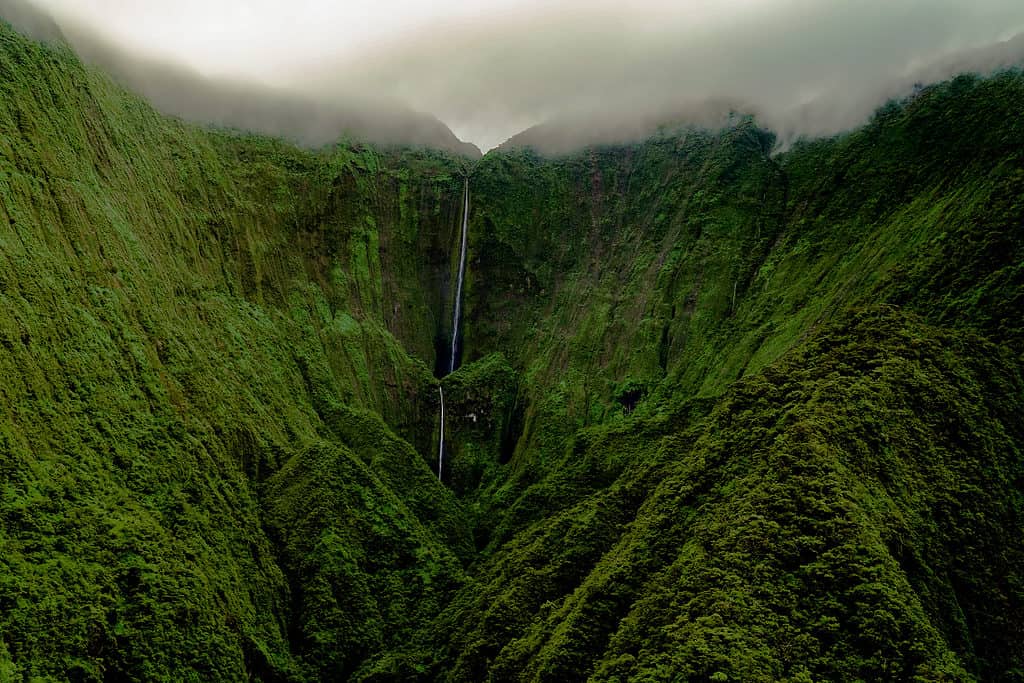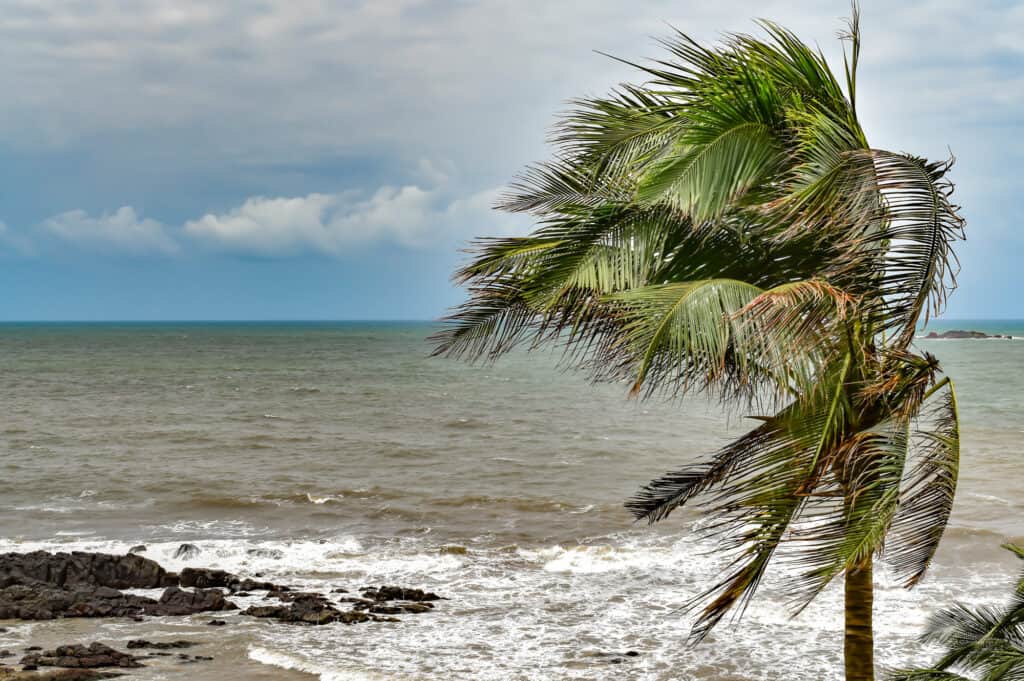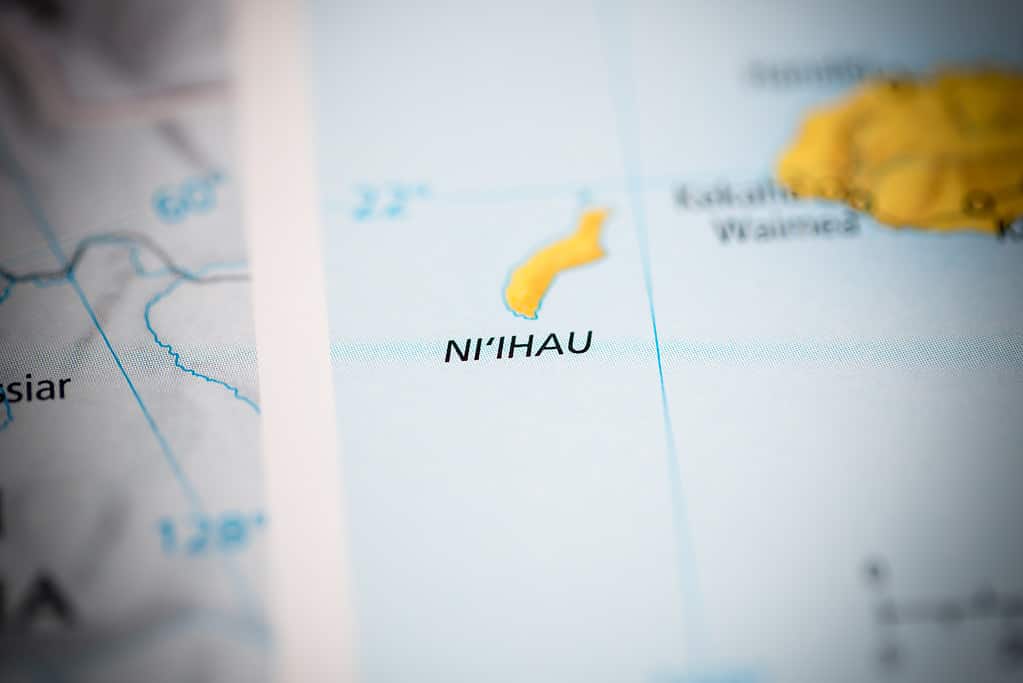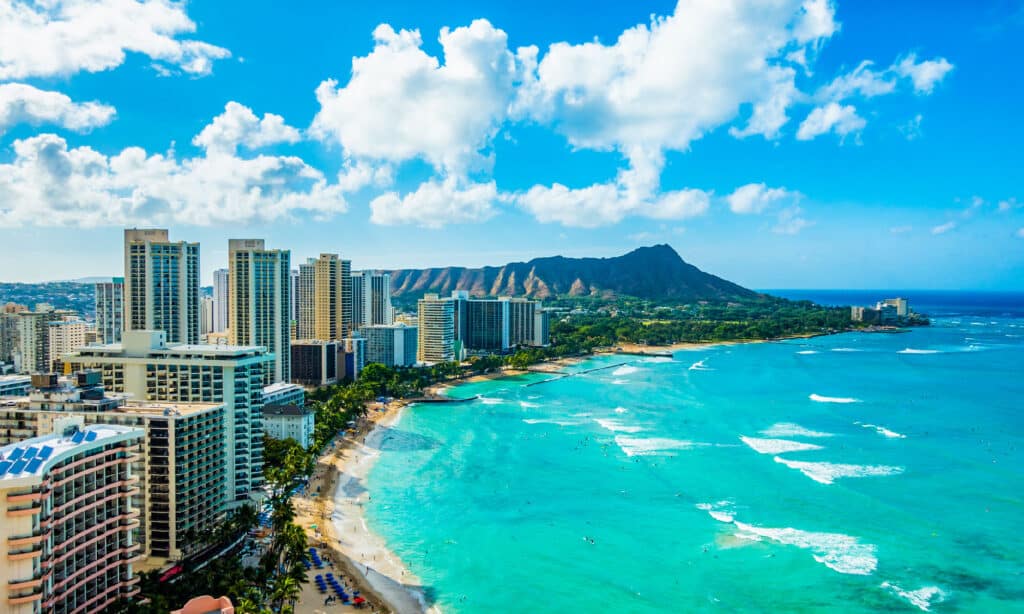Hawaii is revered as a tropical paradise. The state is home to a unique culture, rainforests, active volcanoes, beautiful beaches, and more. Since the area doesn’t get especially cold and has abundant precipitation, the state is perfect for people looking to grow flowers and crops at home. Take a look at what Hawaii gardeners need to know about the conditions in the state to have a successful growing season!
Hawaii’s Climate and Weather

©Brandon Means/Shutterstock.com
Despite being a rather small state, Hawaii’s climate is incredibly diverse. The area possesses roughly 10 different Köppen climate types, with the largest areas belonging to oceanic, savannah, and rainforest climates. Still, the state has some features that stand out such as mild temperatures throughout the year, moderate humidity, and two true seasons: summer and winter.
The coldest temperature ever measured in Hawaii was 12 °F at Mauna Kea Observatory on May 17, 1979. It’s the only state to never experience sub-zero temperatures!
The amount of precipitation in the state greatly varies from place to place, even over short distances. Most of the areas with the greatest amount of rainfall are on the eastern sides of any given island and are often high in elevation. Places like Honolulu receive about 20 to 40 inches of rain per year on average, but other parts of the islands, like Haleakalā on Maui, can get about 300 to 400 inches of rain per year.
The rainiest months are between November and March, so Hawaii gardeners need to be aware of the amount of rain that falls in their area for the sake of their burgeoning plants. Even though the state receives a lot of rain, the area also receives a lot of sunlight. For example, Honolulu has about 271 days with sun, but as many as 180 of them are partly sunny rather than sunny altogether.
The growing season in Hawaii is all year long. However, not all the plants that can be grown in summer can be grown in winter. All told, Hawaii is anything but a homogenous land, so every gardener’s experience is going to vary.
The Challenging Weather Impacting Hawaii Gardeners

©iStock.com/Ashish Kumar
People trying to garden in Hawaii have a few challenges with which to contend. For the most part, the temperature is not one of them since the state has an average high in the mid-80s during the early spring and an average low in the high-60s.
Even the hottest months have an average high of about 90 °F, but garden flowers and vegetables can easily survive and thrive in these temperatures.
The state receives a lot of precipitation and faces some unique challenges in the form of active volcanism and the potential for severe tropical weather. The hurricane season runs from June 1 to November 30.
Fortunately, most tropical cyclones that form in the area do not make landfall in the state. Those that do typically weaken a fair amount before striking the area. Still, heavy rain and mudslides can occur in areas where the leftovers from these storms strike.
Has Recent Weather Harmed Plants?

©SevenMaps/Shutterstock.com
Recent weather has not had much of an impact on plants. A major storm that struck the island in late December brought severe flooding, high winds, and power outages to the island. Aside from that, a series of atmospheric rivers, including the “Pineapple Express” variety, have started over the islands and traveled all the way to California, dumping large amounts of precipitation.
Still, the overall impacts of these storms were small. Hawaii gardeners do not need to worry much about the weather in the region when planting their gardens this year.
When Are the Last Frost Dates in Hawaii?

©iStock.com/okimo
Just about every state in the United States has a time of year when the temperature dips below freezing. Only certain plants can survive in the ground. Certainly, planting new flowers is not a good idea when the ground is frozen.
The last frost date is an important date for gardeners because it is the average last day of the year when temperatures will go below freezing. That means it’s time to plant!
Hawaii doesn’t have a last frost date because the vast majority of the state never goes below freezing. In fact, the coldest areas in the state are uninhabitable due to their mountainous locations. As a result, the guidelines on when to plant flowers and vegetables are largely based on the type of plant and the grower’s goals. For example, if someone wants tomatoes throughout June, July, and August, it’s best to plant them in the ground during mid-to-late March!
5 Plants for Hawaii Gardeners to Grow (And When to Start Them)

©iStock.com/MahirAtes
The growing season in Hawaii is basically year-round depending on the type of plants that a person is growing. This list of vegetables that can grow in Hawaii and when to plant them is based on a typical spring planting schedule. The following dates are guidelines rather than set in stone.
1. Tomatoes
Whether you are planting cherry tomatoes or hulking big beef tomatoes, it’s a good idea to start them indoors during early January. From March 8 to March 29, you should plant them outside with stakes or cages to hold them up.
2. Carrots
Carrots can thrive in cooler weather. You can safely plant these vegetables outdoors starting in late January until about February 7 for a good late-spring harvest.
3. Cabbage
Hawaii gardeners can plant cabbage seeds indoors starting in early-to-mid January. The plants can be taken outdoors and planted from February 1 to February 15.
4. Sweet Potatoes
Sweet potatoes are also started outdoors. Put these in the ground between March 22 and April 5.
5. Celery
Gardeners can start celery very early in the year. In Honolulu, Hawaii, you can plant this as early as the first week of January before transplanting it outside between March 8 and March 22.
Hawaii gardeners can grow various plants throughout the year. However, the varied climate of the state can make plants grow differently for some people than others that live close by. It’s important to learn about the local weather patterns and soil in the area you live to create a flourishing garden.
The post What Hawaii Gardeners Need to Know This Spring appeared first on AZ Animals.
from Animal News, Facts, Rankings, and More! - AZ Animals https://ift.tt/5kvbKQS